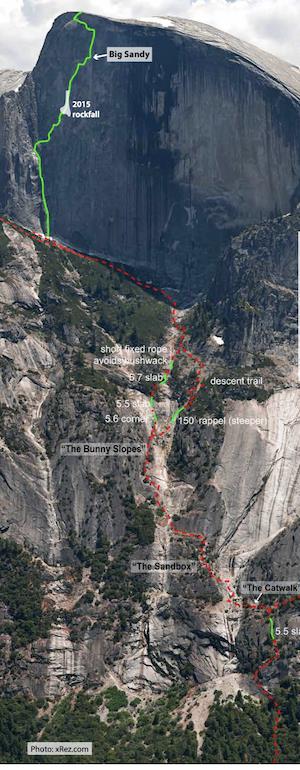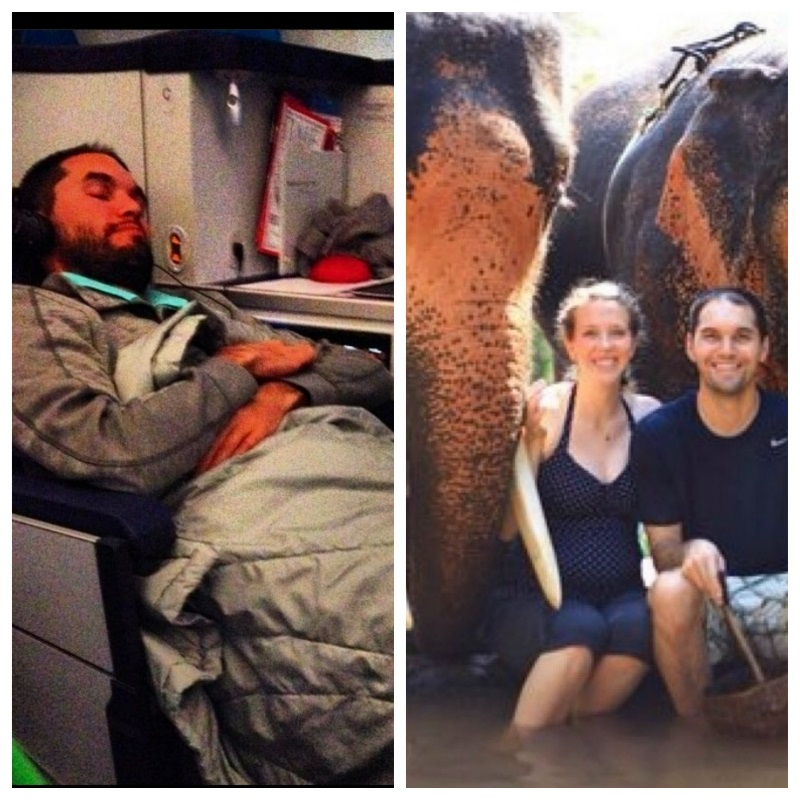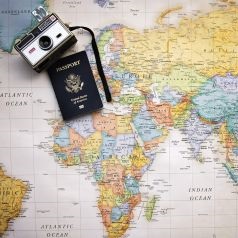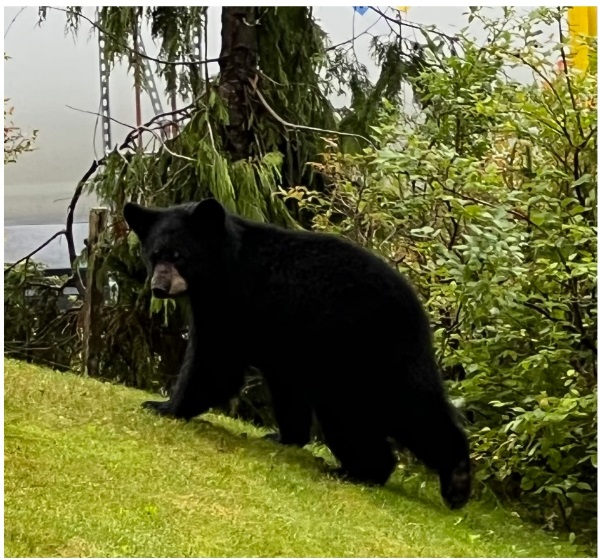<iframe style="width:120px;height:240px;" marginwidth="0" marginheight="0" scrolling="no" frameborder="0" src="//ws-na.amazon-adsystem.com/widgets/q?ServiceVersion=20070822&OneJS=1&Operation=GetAdHtml&MarketPlace=US&source=ss&ref=as_ss_li_til&ad_type=product_link&tracking_id=peaceinvesting-20&language=en_US&marketplace=amazon®ion=US&placement=0060555661&asins=0060555661&linkId=80f8e3b229e4b6fdde8abb238ddd5f6e&show_border=true&link_opens_in_new_window=true"></iframe>|<iframe style="width:120px;height:240px;" marginwidth="0" marginheight="0" scrolling="no" frameborder="0" src="//ws-na.amazon-adsystem.com/widgets/q?ServiceVersion=20070822&OneJS=1&Operation=GetAdHtml&MarketPlace=US&source=ss&ref=as_ss_li_til&ad_type=product_link&tracking_id=peaceinvesting-20&language=en_US&marketplace=amazon®ion=US&placement=1119404509&asins=1119404509&linkId=0beba130446bb217ea2d9cfdcf3b846b&show_border=true&link_opens_in_new_window=true"></iframe>|<iframe style="width:120px;height:240px;" marginwidth="0" marginheight="0" scrolling="no" frameborder="0" src="//ws-na.amazon-adsystem.com/widgets/q?ServiceVersion=20070822&OneJS=1&Operation=GetAdHtml&MarketPlace=US&source=ss&ref=as_ss_li_til&ad_type=product_link&tracking_id=peaceinvesting-20&language=en_US&marketplace=amazon®ion=US&placement=1119376629&asins=1119376629&linkId=2f1e6ff64e783437104d091faaedfec7&show_border=true&link_opens_in_new_window=true"></iframe>

By Josh Katzowitz, WCI Content Director
Every now and then, those of us at The White Coat Investor enjoy writing about our travel adventures and what lessons (financial or otherwise) we can learn from them.
Dr. Jim Dahle has written about climbing to the top of the highest point in Wyoming and how those who don’t take risks “have no idea what they could have seen had they pressed a little farther into the unknown.” I reflected on a recent trip to Israel about how I overcame my discomfort of bargaining to save a little money here and there. One guest writer described how his working trek to Sudan reinvigorated his career. And at WCICON23, keynote speaker Stacy Taniguchi drew universal praise for his talk on choosing to thrive which detailed a nearly disastrous mountain trek on Denali.
Hopefully, readers can draw inspiration from all of that work, whether the topic is serious or silly, monumental or mindless.
Here’s a new idea. I’ve begun collecting mini-essays about the travels of white coat investors (whether it’s Jim, myself, the WCI columnists, or anybody who reads this site) and publish a few of them at once in an occasional series we're calling Travel Club. It could be inspiring, or it could simply be a nice break in the day to be transported to other parts of the world. Either way, it should be entertaining.
I realize some readers believe these posts are either ostentatious or braggadocious or that they have some kind of “look at me, I’m awesome” element. But that’s not the main point of establishing the WCI Travel Club.
Sure, I enjoy reading about the journey of others, whether it’s because it’s already on my travel list or because I can’t imagine trying to duplicate the adventure that somebody else has taken. The real reason, however, for establishing these travel columns is because the outside world is always there to teach us lessons.
In a few more words, you can begin reading about these adventures. Before that, though, I want to invite all readers to share their own experiences with the community. If you have undertaken a trip that taught you lessons about finance, mental wellness, or some other aspect of medicine or life, I’d love to hear from you so that we can include your story in subsequent Travel Club columns. Please email me at [email protected] so we discuss it. It would thrill me to no end to publish these columns a few times a year.
Growing Old on Half Dome

By Dr. Jim Dahle, WCI Founder
[Editor’s Note: This post was never sent out by email, and it has not been seen by the vast majority of WCI readers. It is also very long. You’ll need to set aside a large chunk of time to read it (it is, however, certainly worth the effort). For the purpose of this Travel Club column, I’ve whittled it down to this excerpt, but if you want to experience the entire adventure, here’s where to find it.]
Yosemite National Park is to rock climbers what Mecca is to Muslims. You spend years dreaming of going there to climb. It becomes more than a pilgrimage but a hajj. Every climber from all over the world must make a trip there at some point in their life to be considered a real climber.
You go there to pay homage, and not just to the stone walls and domes with majestic waterfalls cascading over them. You pay homage to the climbers who developed the techniques and equipment you use every time you lay hand to rock. You pay homage to the events that occurred there. Every climber knows not just the names of the routes, but the names of the pitches on the routes and sometimes even the name of a single move on a single pitch on a route. My first trip to Yosemite two decades ago was a week in paradise as I reveled in its special beauty. However, I recall being surprised that there were so many non-climbers there. I had no idea that there was anything else to do in Yosemite than to go climbing. And once you are on the walls surrounding the valley, you no longer know there is anybody else there, despite the tourist crowds along the roads and walkways of the valley floor. It was amazing to go home and blow up my pictures of El Capitan to discover climbers all over the face that I could not see with my naked eye while I was there . . .
I’m not sure exactly when I first became aware of The Regular Northwest Face (RNWF), but it had to be by my early 20s at the latest. I have been wanting to climb this route for about 30 years. Why did it take three decades for me to attempt this dream route of mine? Because I was scared. And I was scared for good reason. The RNWF is a route for super climbers. Climbers like Royal Robbins and Alex Honnold. Maybe not only for professionals, but certainly for people who live, breathe, and eat climbing. Not for recreational folks like me. Not for people who spent their 20s in school and hanging out in hospitals. It was for “dirtbags” who were “living the dream” (both compliments in the climbing world). While your 40s and 50s are much more comfortable if you spent your 20s in medical school, there is an opportunity cost, such as climbing routes like the RNWF.

As the years went by, Yosemite was just too far away for me to spend much time there developing ”big wall” specific climbing skills. I’m not even that good of a free climber . . . Opportunities to climb aid routes were mostly non-existent near the places I’ve lived. I had done a few pitches of aid low on El Capitan on one pilgrimage to Yosemite, but the rest of my aid climbing had been limited to some minor practice sessions at small crags near my home in Utah . . .
I have always enjoyed long multi-pitch climbs, and as the years went by, I stretched the difficulty and the length of my objectives. These climbs often required an “alpine start,” beginning hours before dawn in order to complete a climb before sunset. In fact, I have always defined an “epic” as having to use a headlamp on both ends of the day. While I had passed many nights in the mountains (generally in a tent and sleeping bag at the base of a climb), I had never purposely spent one on a climb, known as a “bivy” and usually involving a lot of suffering. One of my longest climbs, a caffeine-fueled traverse in the Tetons linking Teewinot, Mount Owen, and the Grand Teton required 26 hours of constant movement, but it did not involve a bivy.
As I was closing in on my 48th birthday, it became apparent to me that the accumulation of additional experience as the years went by was no longer overcoming the decline in my fitness.
In short, I had probably peaked as far as doing long, hard climbs. If I was ever going to do the RNWF, it had to be soon. It was time to start planning . . .
The hiking trail to Half Dome is 8 ½ miles long. More importantly, it goes to the wrong place. We didn’t want to go to the Cable Route; we wanted to go to the Northwest Face. Taking the regular trail would require us to ascend 4,000 vertical feet in eight miles, then descend 1,000 feet back around to the face on a climbers trail, having completely circled the peak. However, there is an alternative. Called “The Death Slabs” by climbers, this very direct route goes up right below the face of Half Dome.

It has its risks, however. The majority of the route ascends a gully that drains the face of Half Dome. That means it is wet and a shooting gallery for rockfall. Perhaps more importantly, it is very steep, ascending 3,000 vertical feet in less than a mile. Less a trail than a climbing route in and of itself, it would be a major obstacle. However, if we couldn’t do The Death Slabs, we certainly had no business trying to climb the face above them. We left the tourist trail behind and headed up the hill. Before long we found ourselves on Class 4 terrain. Class 4 with nothing on your back is one thing. Class 4 with 54 pounds on your back is significantly more challenging. Then, we came to the base of a cliff. A ratty old fixed line was there, hopefully securely attached. We put on harnesses (we put our helmets on at Curry Village when we parked the car) and attached an ascender to the rope for security and worked our way up.
We crossed the catwalk, a six-inch wide mossy path above a cliff. We finally made it into the gully, a rock-strewn shooting gallery with a small stream running down it. We worked our way up this for a couple of hours, through wet class 4 terrain and a few more fixed lines before arriving at the base of the wall. We then traversed upward through scree and bushwhacking along the base of the wall toward our route . . .
As we approached I heard voices. Upon bursting out of the bushes at the base, I saw that there was another party of two climbers just finishing the first pitch. Yelling up and down, we ascertained their plan. It was basically the same as ours. They were planning to fix four pitches today using two 70-meter ropes (one of which they would throw to the ground after ascending it in the morning) and leave before dawn tomorrow to try to make it to Big Sandy. This was mostly disappointing because we worried they would be slower than us and cause us to get to Big Sandy in the dark. Worse, Big Sandy really only sleeps two people semi-comfortably. Not four. Nothing we could do about it, though. I suggested they fix pitch 5 too and that we fix pitches 1-3. Then, they could leave before us and get out a couple of pitches ahead of us. Instead, they suggested that we fix pitches 5 and 6 and then ascend their ropes up pitches 1-4 just before them in the morning. I liked the idea of being ahead of them. It eliminated the risk of them dropping rocks on us and slowing us down. It also meant we could grab the prime sleeping spots at Big Sandy. So we agreed to their plan and started up the route at 2:30pm behind them. As we got to know Doug and Brian over the next couple of days, we were more than happy to share the route with them . . .
Adventurers like Christian and I love the outdoors. We go climbing, backpacking, rafting, and canyoneering. We say we love adventure, but in reality, no adventurer actually wants an adventure. You see, an adventure is what you get when things don’t go according to plan. We certainly did not plan to be climbing for 24 hours straight today. Too slow. Too many mishaps. Maybe we had bitten off more than we can chew. If we weren’t in over our heads, the water was certainly lapping up against our nostrils . . .

Topping out at sunset
Yes, we had ascended the face of Half Dome. We were proud of that. Not only did we make it, but we did not need a rescue. But at what price? Was it worth the risk? We've got wives and kids waiting for us at home. What right did we have to push the envelope so far?
We were also not so proud of the style in which we climbed it. We may not have required the assistance of others, but we certainly used it. If an epic is a day where you use the headlamp on both ends of the day, we had a full day of climbing followed by two epics. We had clearly gotten very close to the edge in terms of our capabilities. In retrospect, we probably should not have done it. Certainly, if we had known the amount of suffering we would endure, we would not have chosen to climb the Regular Northwest Face of Half Dome. Now the only question is how much therapy we will need to stop the nightmares about it. I keep thinking about that unlocked biner and pendulums into space. Christian had a nightmare about going into renal failure and now needing dialysis. Both the good and the bad of this adventure are going to be unforgettable.
Maybe that's what this writing is: a bit of therapy. As time goes on, the bruises, scrapes, sore muscles, subungual hematomas, and toe neuropathy will fade, and thoughts of other routes will begin to creep in. They always do.
[Editor’s Note: As I mentioned earlier, I left most of Jim’s post on the cutting room floor. If you want to read about the entire trip (and, say, you have a 10-hour airplane trip ahead of you), you can read the rest at your leisure.]
Thailand, Credit Card Points, and the Power of a 100% Tip

By Dr. Tyler Scott, WCI Columnist
Asking me to write a 500-600 word mini-essay is like asking Tom Brady to return punts. It’s not really my skill set. I’m slow and plodding and methodical and generally pleonastic in my writing. So, perhaps this will be good for me or maybe it will be a frenetic mess. (Fifty words wasted so far, not a great start).
I’m stretching my comfort level here because I think the idea is so cool. To offer up financial and wellness discoveries found during our wanderlust is something I want to do for myself and to share with this community. I’m excited about this new addition to our slice of the blogosphere.
The first trip that came to mind was our vacation to Thailand about eight years ago. It was an ecologically, culturally, and financially profound experience. There is so much I learned and felt while I was in that magical land that I could write about it for days, but for now, I’ll reflect on two financial lessons that have stayed with me.
Those are:
- The not-so-free nature of credit card points.
- The power of a favorable exchange rate.
Credit Card Points
We did not have very much discretionary income at this stage of life, and we had set a $3,000 budget for our two weeks in Thailand, including airfare. To make that possible, we decided to “play the credit card points game” to get our airline tickets paid for. We strategically opened several credit cards over a 12-month period that gave us points within the Star Alliance network, and we set out to fly to Thailand in business class for “free.”
We did it, and it was spectacular.
Flying in our own lay-flat seats on the brand-new Dreamliner from Seattle to Tokyo and eating hot meals for 12 hours was divine. Accessing the premium lounges in the airports where we could shower, sleep, and eat in peace and for free was a transcendent travel luxury for us. Having what amounted to our own beds on the next eight-hour leg from Tokyo to Bangkok was exquisite. It’s hard to put a price on that kind of comfort and ease, but it certainly was not “free” by any stretch of the imagination. At least if you put any value on what your time is worth.
By the time we opened the different credit cards at the right times so we could get the bonus points for the minimum spending requirements within the allotted time frames (all in the correct categories), filled out the paperwork, stayed on hold when things didn’t come through as advertised, etc. . . . we certainly worked for those points. It took a tremendous amount of time and effort to plan and execute this strategy.
It was worth it for us on our $110,000 of income in order to experience that decadent level of travel (those tickets would have been ~$6,000 each), and at the same time, we wouldn’t do it again.

(Left) Tyler Scott sleeping in business class on the way to Thailand; (Right) Tyler Scott, Megan Scott, and some elephants
A Favorable Exchange Rate
Thailand is expensive to get to but cheap to stay in, largely due to the exchange rate between US dollars and Thai baht. When we were there, $1 was worth ~35 baht (today it’s worth about 36 baht). The first hotel we stayed in when we arrived in Chiang Rai was the nicest hotel I had ever been to at that point in my life, and it cost 2,800 baht per night. Yep, $80 for the most beautiful, relaxing night away I had ever experienced.
Also, I love nothing more than a massage, and I had heard great things about Thai massage. So I got a one-hour full-body Thai massage while I was there.
Every. Single. Day.
Sometimes twice if I had the time.
The cost? 210-350 baht ($6-$10) for an hour massage! It was incredible.

Other than the value proposition and the new range of motion previously unknown to me from these treatments, the best thing about these massages was giving a tip at the end. I was so grateful to these 5-foot, 90-pound women who worked so hard on behalf of my dentally traumatized back and neck, it felt easy and intuitive to give them a 100% tip once we were done.
If the massage was 250 baht, I’d just give them 500 and say “Khoob khun krab (thank you)” on my way out the door. Twice when I did this, the masseuse’s eyes welled up, and in a language I’ll never understand but in a tone that needs no translation, they extended their thanks for my alleged generosity.
Paying an extra $6 for a service that I needed and appreciated hardly felt like generosity to me, but those interactions left an indelible impression on me about the excessive wealth we enjoy and how little it takes to make a meaningful difference for someone who simply drew a different straw than I did in this life. Among the many lessons I learned from our trip to Thailand, these seemingly disparate lessons of the value of $6 in one context and the notably lesser value of $6,000 in another stand out.
OK, that's 786 words. Sorry, I’m hopeless. Thanks to all of you for hanging in there with me. Travel often, travel well, and come back here to tell us what you learn along the way!
My Alaska

By Dr. Margaret Curtis, WCI Columnist
In September 2023, I spent three weeks in Juneau, Alaska, working for the Southeast Alaska Regional Health Consortium (SEARHC). I covered for a staff pediatrician and lived with my friend and former college roommate, Rebecca. Although not a purely personal trip, I got to fulfill a long-time dream to work in Alaska.
My three weeks there were wonderfully simple. Every morning, I walked down the hill to the gym and then drove three miles to the clinic with bald eagles flying overhead. Juneau is stunningly beautiful and culturally rich. The downtown (such as it is) is nestled between mountains, ocean, and more mountains. The three local Native Alaskan tribes (Tlingit, Haida, and Tsimshian) are a visible and important presence.
Most of the work I did in Alaska was well in my wheelhouse, but I also got to use some skills I hadn’t in a while. SEARHC is both well-resourced (there is a living, breathing pediatric dentist on staff) and out on the sharp end. If you want to stress-test your sympathetic nervous system, try evaluating a tachypneic newborn when you are a two-hour flight away from the nearest tertiary care center.
Here are some of the lessons I learned in Alaska:

The bear cub who walked by my office window in Alaska.
The Best Things in Life Are Free (or Cheap)
Rebecca was widowed at age 39, and she has been raising her two kids on her own ever since. If you think you can’t live on your doctor's salary, she would like a word.
When I wasn’t working, Rebecca and I were hiking and hosting potlucks (free). I did a lot of staring in awe at the natural beauty around me (also free). We went to the monthly storytelling night ($7), watched all of Ted Lasso (Apple TV, $6.99 per month), and visited the magnificent Sealaska Heritage Center ($7). Some days, I splurged on a latte from Grumpy’s Deli down the street ($4.73).
You Are Who You Surround Yourself With
Becca isn’t the only person in Juneau who makes her own fun. I met a lot of hardy, adventurous people who couldn’t care less about material wealth. As someone there told me: “No one moves to Juneau because they want to climb the corporate ladder.” The houses are modest. The potlucks are well-attended. And the used-kid clothing swaps keep every family in town clothed as far as I can tell. People here understand a sidewalk sofa. If I lived in a high-cost-of-living city or suburb, I would probably feel like a have-not. In Alaska, I couldn’t believe my luck.
Mission-Driven Doctoring Is a Lot More Fun
The group I worked for is a subsidiary of the Alaska Native Tribal Health Consortium, whose purpose is to promote the health of Alaska Natives. No healthcare system is perfect, but working for one that is centered around the needs of a community rather than, for example, the profits of a private equity firm makes all the ordinary frustrations a lot more tolerable.
I saw a lot of cute kids. I met a lot of remarkable people from a remarkable culture. I got to feel I was being of service. I couldn’t believe my luck.
Do you have your own travel stories where you learned a lesson? What else have you gained from your journeys? Comment below and/or email me!
[Editor's Note: For comments, complaints, suggestions, or plaudits, email Josh Katzowitz at [email protected].]
The post WCI Travel Club: Meaningful Trips to Half Dome, Thailand, and Alaska appeared first on The White Coat Investor - Investing & Personal Finance for Doctors.
||
----------------------------
By: Josh Katzowitz
Title: WCI Travel Club: Meaningful Trips to Half Dome, Thailand, and Alaska
Sourced From: www.whitecoatinvestor.com/wci-travel-club-half-dome-thailand-alaska/
Published Date: Sun, 05 Nov 2023 06:30:48 +0000
Read More
.png) InvestingStocksToolsClubsVideosPrivacy PolicyTerms And Conditions
InvestingStocksToolsClubsVideosPrivacy PolicyTerms And Conditions
